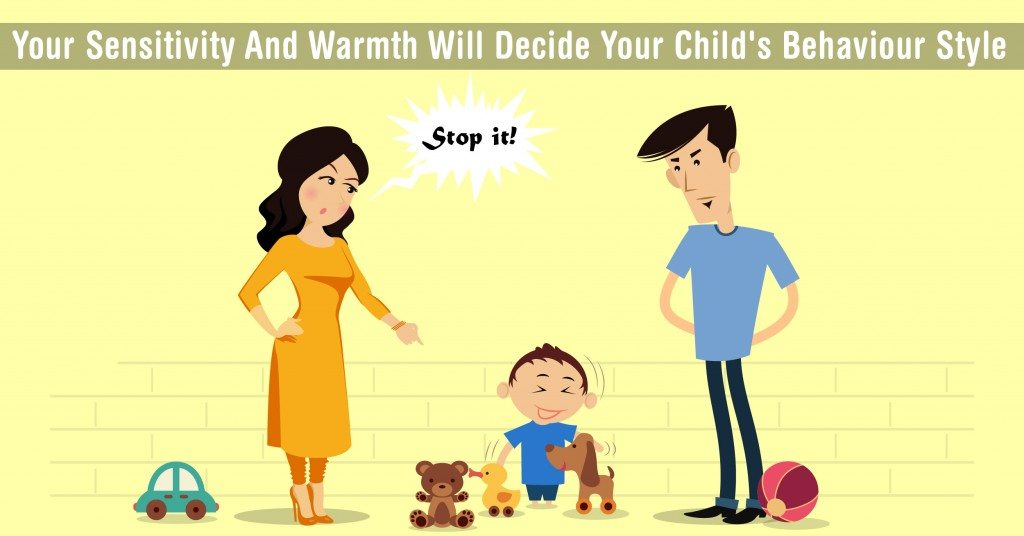Why do infants cry when their mother leaves the room? Why do they insist on being picked up, hugged and fed at regular intervals? These questions relate to key interactions between children and their caregivers. Attachment is the relationship between a child and his caretaker. The manner in which a child connects to his caregiver determines the caregiver’s response and ultimately paves the way for the ability of the child to form healthy future relationships and develop a flexible and adaptive personality. Recognizing the child’s attachment style will help caregivers (parents and teachers) to become aware of the child’s behavior and respond appropriately.
Four distinct attachment styles are seen in children:
- Secure attachment:
Such children often use the caregiver as a secure base or a safe haven from where they explore the world. They are easily soothed in difficult situations and generally adapt well to change. Most children exhibit this style. They tend to be more popular with their peers, do well academically, get into leadership roles, be emotionally stable and have greater capacities to handle stress.
- Insecure attachment:
Such children do not use the caregiver as a secure base. They seem disconnected from them and also don’t seem to notice when the caregiver is not present. This style becomes predominant when the needs of the child are unmet and he realizes that communicating his needs is not serving a purpose.
- Ambivalent attachment:
Such children typically explore lesser of the outside world and are often wary of strangers. They are ‘slow to warm up’ children who take a long time to trust new people. Such children demonstrate clingy behavior to the caregiver but often reject them during an interaction.
- Disorganized attachment:
Such children display a mix of the above behaviors. They are inconsistent in their responses and are not predictable in their behavior. They may show fear and confusion with the caregivers.
Caregiver sensitivity and warmth determine these styles in children. A child’s attachment style generally develops based on the child’s perception or understanding of the caregiver’s reliability in providing comfort, support, and security. Behaviours that promote attachment and provide the opportunity for meaningful interaction include:
- Smiling
- Looking at each other
- Vocalizing to each other
- Following
- Clinging
- Physical touch and hugging
- Exploring the surroundings
- Feeding interactions
- Playing
Caregivers should include these behaviors in the repertoire of their behaviors to promote and foster healthy attachment styles in children.
Attachment to objects:
Attachment to an object often develops toward the end of the first year. Strong attachment to blankets peaks at 2 years, stays near this high level till 3.5 years and then diminishes steadily. By five and a half, fewer than to 8 percent of children are attached to toys or blankets. Other objects of attachment can be articles of clothing, cloth diapers, soft toys or almost anything with a soft, pleasing texture. The developmental phenomenon in young children is their tendency to become strongly attached to inanimate objects, usually soft, cuddly toys, or blankets. Children’s use of objects is especially noted when children are under stressful situations or vulnerable states, such as in unfamiliar environments, when upset, ill, and tired. The favored objects often referred to as “security blankets,” come to serve a comforting, anxiety-reducing function for the child.
These transitional objects provide a sense of security when toddlers are beginning to explore the world and become independent. This attachment is not abnormal, it is beneficial. But if the child is constantly snuggling to his object, not playing and running around or socializing, here are few things that parents can do.
- Never tease the child about his object and don’t insist that he give it up.
- Set limits, if possible: Tell the child that he may carry his teddy into the bed but not in the playground as it might get dirty.
- Ask for the child’s help: Tell the child to find a special place for his beloved toy where he is safe when the child is involved in other tasks.
- Laundry visits: Make sure to schedule regular washes for the toy.
- Keep his hands busy with other toys and puzzles.
- Give him lots of hugs and other forms of reassurance!
Need advice to develop a healthy attachment with your child? Get Parenting Advice by talking to the experts at YourDOST.

